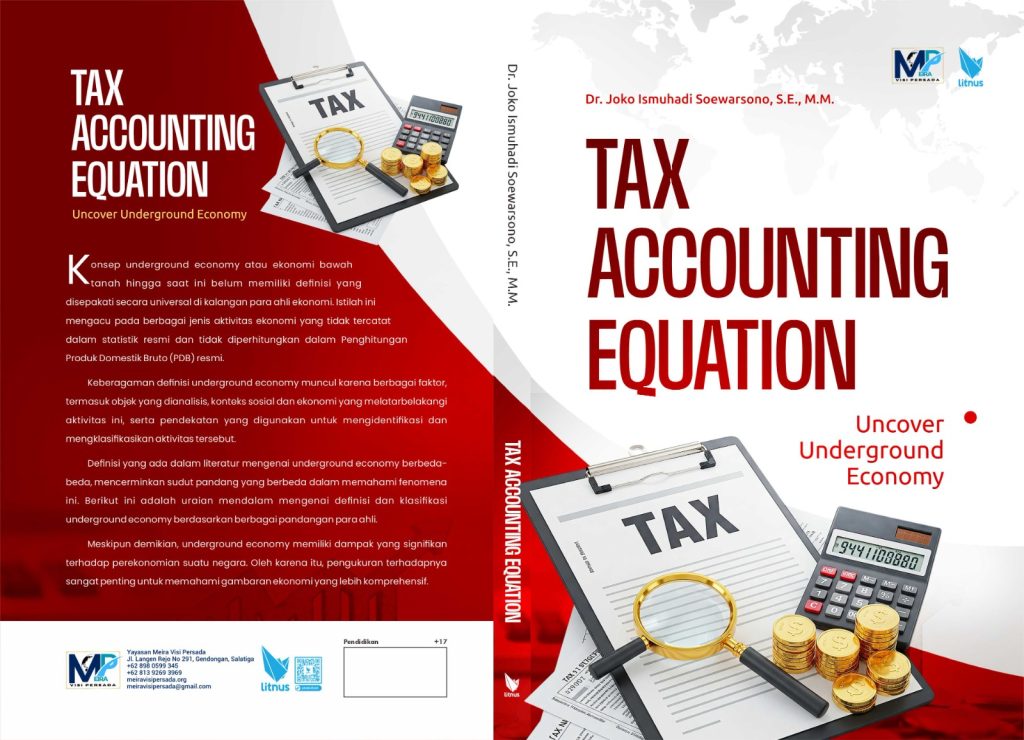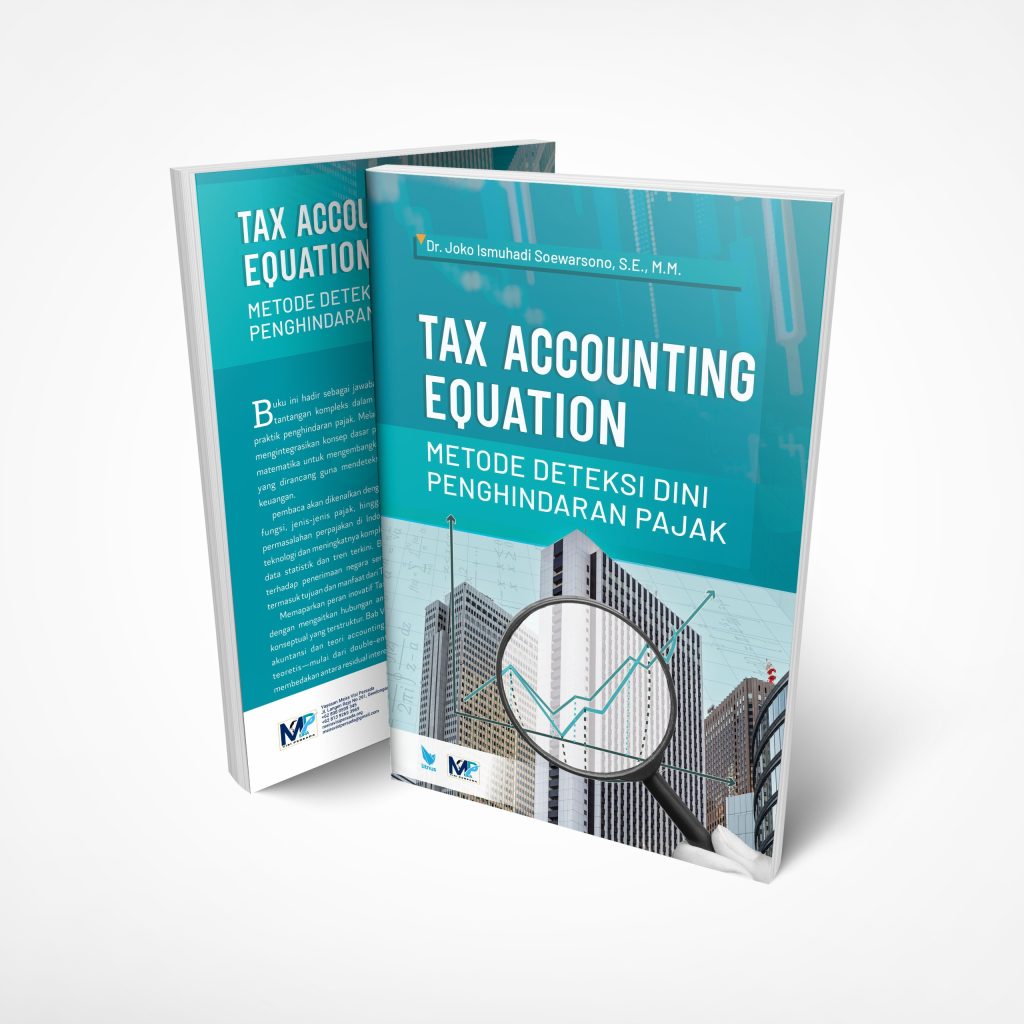
The Accounting Equation and its Implications for Tax Analysis
- Ekonomi
Monday, 19 May 2025 12:47 WIB

Jakarta, fiskusnews.com:
The basic accounting equation, represented as Assets = Liabilities + Equity, serves as the bedrock of modern accounting practices, underpinning the double-entry bookkeeping system that ensures the financial records of a company maintain a fundamental balance. This equation signifies that a company’s total resources (assets) are financed by either what it owes to others (liabilities) or the investment of its owners (equity). Expanding upon this foundational principle, the expanded accounting equation provides a more detailed understanding of the equity component: Assets = Liabilities + Contributed Capital + Retained Earnings (Revenues – Expenses – Dividends/Drawals). This expansion illustrates how the operational performance of a company, through its revenues and expenses, and the distribution of profits, affects the owners’ stake in the business. The user’s inquiry delves into a specific scenario concerning a taxpayer with no significant corporate income tax, suggesting that this situation would lead to zero Equity and Dividends. Furthermore, the user has encountered Dr. Joko Ismuhadi Soewarsono’s Tax Accounting Equation (TAE), an analytical tool developed within the Indonesian tax context aimed at detecting tax avoidance and financial irregularities. Understanding the interplay between the fundamental accounting principles, the specifics of this taxpayer scenario, and the application of specialized tools like the TAE is crucial for a comprehensive analysis of tax implications.
The basic accounting equation, Assets = Liabilities + Equity, is a cornerstone of accounting, ensuring that a company’s balance sheet always reflects a state of equilibrium. Assets are defined as resources owned or controlled by a company that are expected to yield future economic benefits. These can include tangible items like cash, inventory, and equipment, as well as intangible assets. Liabilities, on the other hand, represent a company’s present obligations arising from past events, indicating amounts owed to external parties such as lenders and suppliers. Equity is the residual interest in a company’s assets after deducting all its liabilities, essentially representing the owners’ stake in the business. The expanded accounting equation, Assets = Liabilities + Contributed Capital + Retained Earnings (Revenues – Expenses – Dividends/Drawals), offers a more detailed breakdown of equity. Contributed Capital, also known as Owner’s Capital or Paid-in Capital, reflects the direct investment made by the owners into the business. Retained Earnings represent the cumulative net income of the company that has not been distributed to shareholders as dividends. Revenues are the income generated from the company’s core business activities , while Expenses are the costs incurred in generating that revenue. Dividends (for corporations) or Drawals (for sole proprietorships/partnerships) signify the distribution of profits to the owners. A fundamental principle underlying these equations is double-entry bookkeeping, which mandates that every financial transaction affects at least two accounts, thereby ensuring the accounting equation remains balanced. This system utilizes debits and credits, where debits typically increase asset and expense accounts and decrease liability, equity, and revenue accounts, with credits having the opposite effect.
The user’s proposed variations of the accounting equation, namely Assets = Liabilities + Equity + Revenue – Expenses – Drawal and Assets + Drawal + Expenses = Liabilities + Equity + Revenue, are indeed mathematically equivalent to the standard expanded accounting equation. These variations are simply algebraic rearrangements and do not represent fundamentally different accounting principles. For instance, by starting with the standard expanded equation (Assets = Liabilities + Contributed Capital + Retained Earnings), and substituting Retained Earnings with (Beginning Retained Earnings + Revenues – Expenses – Dividends/Drawals), one can see the inherent mathematical connections to the user’s proposed forms. The user’s deduction that a taxpayer with no significant corporate income tax would necessarily have zero Equity and Dividends, however, requires closer examination. Equity is composed of several elements, including Contributed Capital, which represents the initial and any subsequent investments made by the owners. This capital remains part of the equity even if the company does not incur a significant income tax liability in a particular period. Furthermore, Retained Earnings, which are the accumulated profits from past periods that have not been distributed, can also contribute to a positive equity balance. A company might have generated profits in previous years, leading to a substantial balance in retained earnings, which would still be part of the equity even if the current year’s profitability results in minimal income tax. Regarding dividends, these are typically paid out of a company’s accumulated retained earnings. The decision to pay dividends rests with the company’s Board of Directors, who consider various factors such as the company’s profitability, cash flow, and future investment needs. The absence of significant corporate income tax in a given year does not automatically imply that the company has no past profits (retained earnings) available for distribution as dividends. Various tax deductions, credits, and timing differences can result in a low or zero income tax liability even for a profitable company.
Dr. Joko Ismuhadi Soewarsono, a tax expert with the Directorate General of Taxation in Indonesia, has developed the Tax Accounting Equation (TAE) as a specialized tool for forensic tax analysis. His expertise as a Senior Tax Auditor, coupled with his research interests in tax planning, financial analysis, and valuation, suggests a deep understanding of the intricacies of tax compliance and potential avenues for tax avoidance. The primary objective of the TAE is to serve as an analytical instrument for the early detection of potential tax avoidance and/or embezzlement by scrutinizing taxpayer financial statements through an Accounting Mathematical Equation Approach. This approach aims to identify tendencies towards tax irregularities that might not be immediately apparent through traditional financial statement analysis. The research material presents the TAE in several forms, each offering a unique perspective for tax analysis. One form, “Profits Loss & Balance Sheet Equally,” is expressed as Revenues – Expenses = Assets – Liabilities. This formulation emphasizes the expected equilibrium between a company’s profitability, as reflected in its income statement (Revenues – Expenses), and its net worth, as shown on its balance sheet (Equity = Assets – Liabilities). A significant deviation from this equilibrium might indicate potential misreporting of financial information. Another form, “Tax Purpose Analytically,” is represented as Revenues = Expenses + Assets – Liabilities. This form specifically highlights a potential inverse relationship between Revenues and Liabilities, suggesting that taxpayers might attempt to avoid tax by deliberately misrecording accounting transactions, such as classifying Revenues as liabilities and Expenses as assets, possibly utilizing Clearing Accounts to obscure these manipulations. An alternative, simplified form of the TAE can be derived as Revenues = Expenses + Equity, based on the relationship Equity = Assets – Liabilities. This form directly links a company’s revenue generation to its expenses and the owners’ stake, providing another lens through which to analyze financial health and potential irregularities in revenue or expense reporting. The TAE signifies a shift in focus from the primarily balance sheet-oriented view of the traditional accounting equation to a more integrated analysis that incorporates both the income statement and the balance sheet specifically for tax-related scrutiny. By employing the TAE, tax authorities can quantitatively assess financial statements to identify unusual patterns or discrepancies that might be indicative of tax evasion schemes, such as the deliberate misclassification of revenues and expenses.
A company’s profitability, defined as Revenues minus Expenses, has a direct impact on its Retained Earnings, which is a fundamental component of Equity. When a company generates a net profit (Revenues exceed Expenses), this profit increases its retained earnings, reflecting an accumulation of wealth that belongs to the owners and strengthens the company’s financial foundation. Conversely, a net loss (Expenses exceed Revenues) will decrease retained earnings, potentially eroding the owners’ equity over time and impacting the company’s long-term financial stability. Corporate income tax liability, using the US system as an example, is generally determined by several factors. Taxable income is the primary base, calculated as a corporation’s total revenues less allowable deductions for business expenses. The applicable corporate income tax rate, which in the US is a flat 21% for C-corporations, is then applied to this taxable income to determine the tax liability. Additionally, tax credits and incentives offered by the government can directly reduce the amount of tax owed, encouraging specific business activities or investments. The complex interplay of tax laws, regulations, and accounting standards dictates how income and expenses are recognized and reported for tax purposes, which can sometimes differ from general accounting principles. The accounting equation reflects the impact of profits and tax on a company’s financial position. When a company generates a profit and does not distribute it as dividends, its retained earnings increase, leading to an overall rise in equity. This increase in equity must be balanced by a corresponding increase in assets or a decrease in liabilities. The payment of income tax, being an expense, reduces the company’s net income, which in turn limits the increase in retained earnings for that period. The actual cash payment for taxes also results in a decrease in the company’s cash balance, an asset.
Corporations typically pay dividends to their shareholders under specific conditions. Firstly, the company must have accumulated sufficient profits, usually reflected in a positive balance of retained earnings, to support the dividend payment. Dividends are essentially a distribution of these past successes. Secondly, the company’s Board of Directors must formally declare the dividend, specifying the amount to be paid per share and the date of payment. This decision is a strategic one, balancing the desire to reward shareholders with the company’s financial health and future needs. Thirdly, shareholders must own the company’s stock before the ex-dividend date to be eligible to receive the declared dividend. This date serves as a cutoff for determining which shareholders will receive the upcoming dividend payment. Dividend payments have a direct impact on the accounting equation. When a company pays cash dividends, its cash account (an asset) decreases, and its retained earnings (a component of equity) also decrease by the same amount. This reflects both the outflow of cash and the reduction in accumulated profits available for future use. In contrast, stock dividends involve the company issuing additional shares to its existing shareholders. This action leads to a decrease in retained earnings and a corresponding increase in the common stock account (another part of equity), while the total equity remains unchanged. Therefore, the absence of significant corporate income tax in a current period does not automatically mean that a company cannot pay dividends. If the company has accumulated sufficient retained earnings from prior profitable years, it may still have the capacity to distribute dividends. Retained earnings represent the cumulative net income earned over the company’s history, less any dividends already paid. A company with a strong history of profitability could have a substantial retained earnings balance even in a year where its taxable income is low or zero due to various factors influencing tax liability.
In conclusion, a thorough understanding of the accounting equation, in both its basic and expanded forms, is essential for accurate financial reporting and analysis. While the user’s proposed variations of the equation are mathematically valid, the deduction that no significant corporate income tax necessarily equates to zero Equity and Dividends is not always accurate. Equity comprises not only retained earnings, which are influenced by profitability and tax, but also contributed capital. Furthermore, dividend payments are primarily determined by the availability of accumulated retained earnings and the strategic decisions of the Board of Directors, and a lack of current income tax does not automatically preclude the existence of sufficient past profits for distribution. Dr. Joko Ismuhadi’s Tax Accounting Equation (TAE) offers a valuable forensic tool, particularly within the Indonesian tax environment, by focusing on the relationship between the income statement and the balance sheet to detect potential tax avoidance and financial irregularities. The TAE’s various forms provide targeted approaches to identify specific patterns of misreporting. Ultimately, a comprehensive assessment of a company’s financial health and its capacity to maintain equity and pay dividends requires a nuanced understanding of its historical performance, capital structure, and strategic decisions, rather than solely relying on its tax liability in a single period.
| Equation Form | Formula | Key Components | Purpose |
|---|---|---|---|
| Basic | Assets = Liabilities + Equity | Assets, Liabilities, Equity | Represents the fundamental relationship between a company’s resources and the claims against them. |
| Expanded | Assets = Liabilities + Contributed Capital + Retained Earnings (Revenues – Expenses – Dividends/Drawals) | Assets, Liabilities, Contributed Capital, Retained Earnings, Revenues, Expenses, Dividends/Drawals | Provides a more detailed view of equity and the impact of operational activities and profit distribution. |
| Form Name | Formula | Key Focus/Interpretation |
|---|---|---|
| Profits Loss & Balance Sheet Equally | Revenues – Expenses = Assets – Liabilities | Emphasizes the expected equilibrium between a company’s profitability (income statement) and its net worth (balance sheet). Significant deviations may indicate misreporting. |
| Tax Purpose Analytically | Revenues = Expenses + Assets – Liabilities | Highlights a potential inverse relationship between revenues and liabilities in cases of suspected tax avoidance, where revenue might be underreported by being misclassified as liabilities. |
| Alternative Form | Revenues = Expenses + Equity | Directly links a company’s revenue generation to its expenses and the owners’ stake, providing a simplified view for analyzing financial health and potential irregularities related to revenue or expense reporting. |
Reporter: Marshanda Gita – Pertapsi Muda
Share
Berita Lainnya
Harvey Moeis Korupsi Rp271 T, Ingat Lagi Sentilan Sri Mulyani: Ada Anak Dibelikan Pesawat sama Ortunya
Persamaan Ismuhadi: Alat Akuntansi Forensik Baru untuk Peningkatan Penegakan Pajak di Indonesia
Implementasi Series #2: Dampak Core Tax terhadap SPT Tahunan PPh OP 2025 & Tahun Sebelumnya
Pejuang Coretax 225: Perjuangan Terakhir Abang Muhammad Nurul Azhar
Non-Conviction Based Asset Forfeiture: A Potential Mechanism for Enhancing Tax Revenue and Deterring Tax Crimes
PPh Final: Simplifikasi atau Transparansi?
Inilah Daftar Calon Menteri Prabowo
Rekomendasi untuk Anda

Berita Terbaru
Eksplor lebih dalam berita dan program khas fiskusnews.com
Tag Terpopuler
# #TAE
# #TAX ACCOUNTING EQUATION
# #TAX FRAUD
# #TAX EVASION













